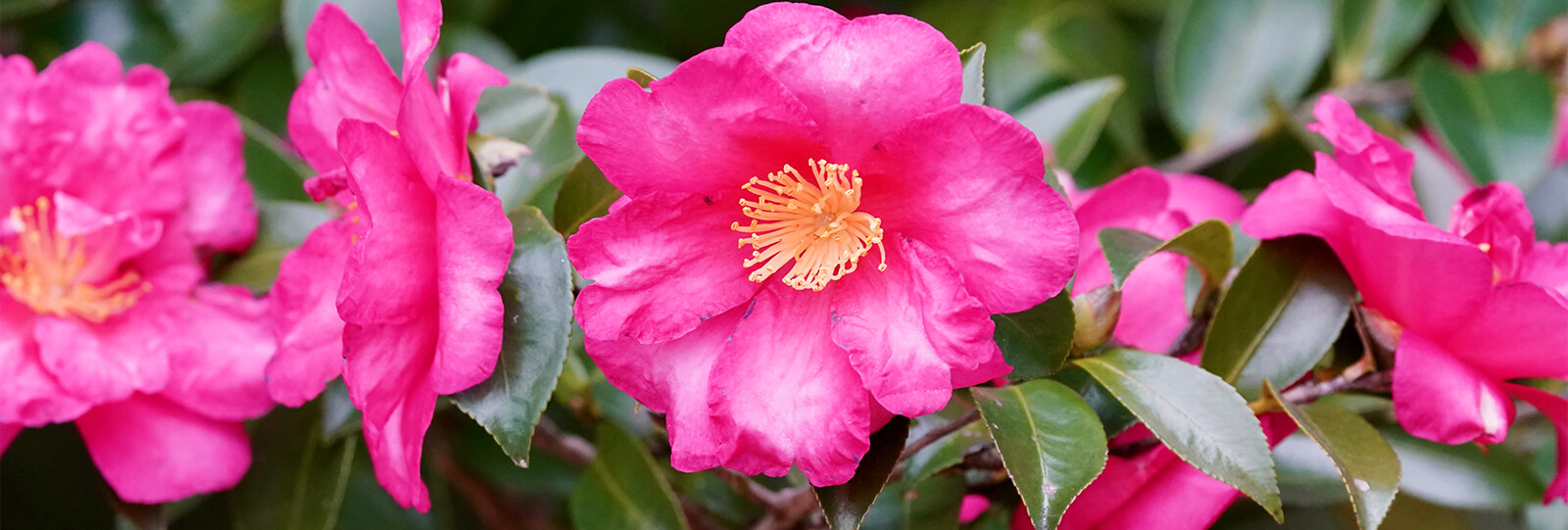
6 Camellias You Need To See To Believe
The camellia is an A-list celebrity in the world of gardening, with bombshell blossoms and evergreen foliage that never fails to impress. Want to grow these fashionable flowers in your own garden? Take a look at some of the most popular varieties you can grow here in Texas. Don’t forget to check our care guide so you can grow this sensational flowering evergreen with the best possible results.
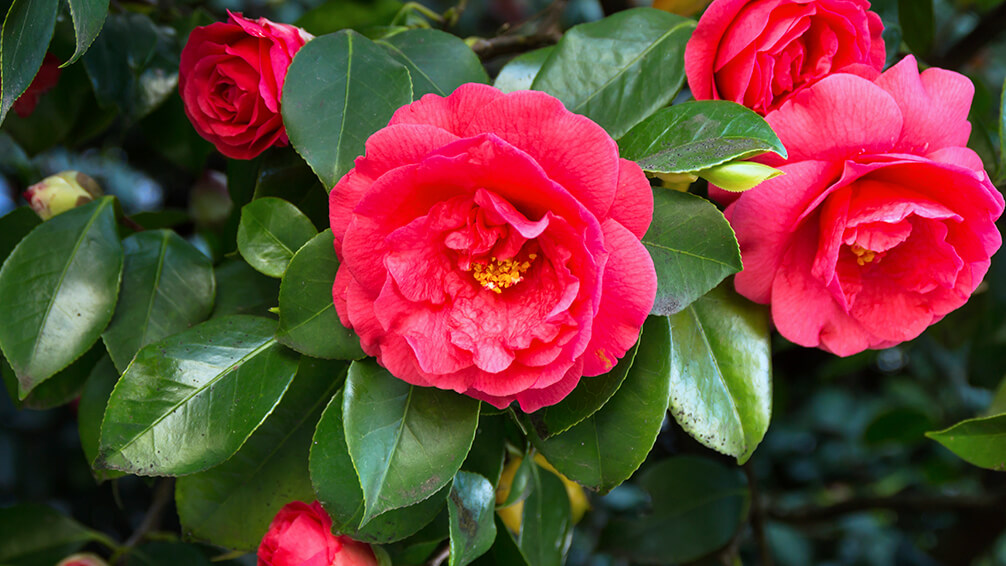
Camellia Flowers to Grow in Houston
There are a zillion varieties of the camellia plant, each with its own distinctive features. Most of the ones we grow in Texas fall into one of two categories; sasanqua or japonica (or Japanese). Here’s a selection of our favorite varieties of each and the differences between them.
Camellia Sasanqua Varieties
If you want a dwarf camellia that isn’t too huge and blends easily into the landscape, sasanquas are excellent options. They’re about half the size of their Japanese cousins, with smaller foliage and less dense branching, so they’re easy to prune and maintain. Sometimes their evergreen foliage emerges as gold, so they almost have a reverse-autumn foliage effect! One thing to keep in mind about sasanquas is that they don’t make great cut flowers, so if you want to grow camellias for bouquets, you’ll want to opt for a japonica instead.
Shi Shi camellia looks like it belongs in the garden of Barbie’s dreamhouse. Its glowing hot pink petals are ruffled like a taffeta ballgown, and they bloom for half the year, so they definitely make a lasting impression!
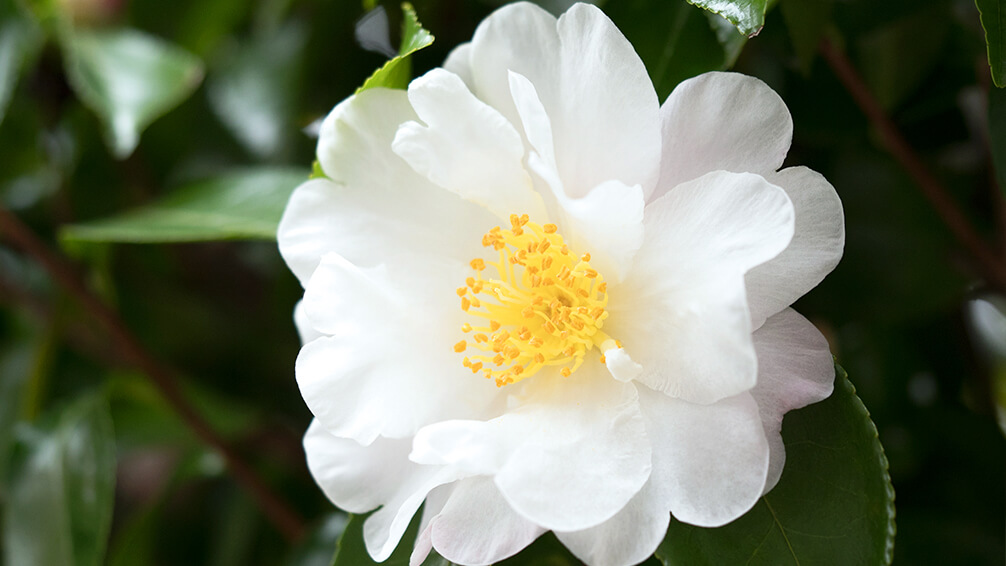
Camellia Setsugekka
Delicate, crisp white petals and a butter-yellow center are nestled in a bed of dark green, glossy leaves, creating an elegant, luxurious look like a scene from an oil painting. It’s quite fragrant too, so if you plant a border around your home, you can catch whiffs of its lovely scent from the window!
Shi Shi Gashira
This popular variety, also known as the Shi Shi camellia, looks like it belongs in the garden of Barbie’s dreamhouse. Its glowing hot pink petals are ruffled like a taffeta ballgown, and they bloom for half the year, so they definitely make a lasting impression! They’re also great for containers since they’re a bit more compact, though you’ll need to prune them after they bloom to keep them from getting too unruly.
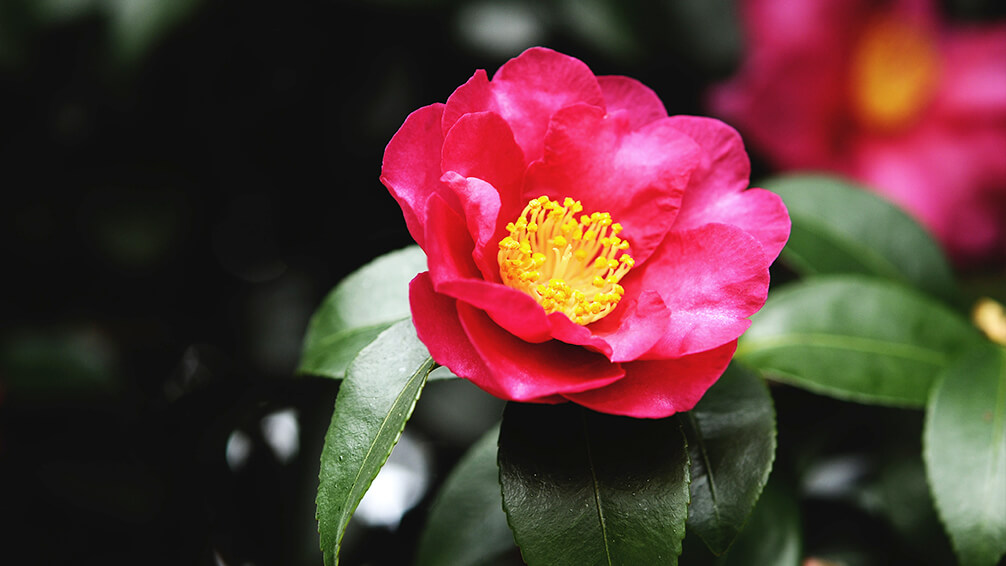
Yuletide
It’s no surprise why this beauty earned a Christmassy nickname—its blossoms are cranberry red with a frilly golden center that looks just like a holiday gift ribbon. They’re less thick and voluminous than many other varieties—Yuletides have single flowers with 5 or 6 flat petals that fan out in a cartoonishly adorable way.
Japanese Camellia Varieties
A favorite for cut bouquets and arrangements, these dramatic blooms are anything but subtle, with some shrubs reaching up to 12 feet tall. With proper upkeep, this hugely popular shrub can continue growing for centuries. It’s rumored that some of the camellias surrounding the Emperor’s palace in Japan are over 500 years old! Plant some history with these magnificent flowering shrubs.
Desire
This award-winning variety makes quite the spectacle, with perfectly-spiraled petals that look like origami! They’re almost too perfect to be real. The creamy-white flower heads are about 4 inches across and look as though they’ve been airbrushed with rosy pink paint.
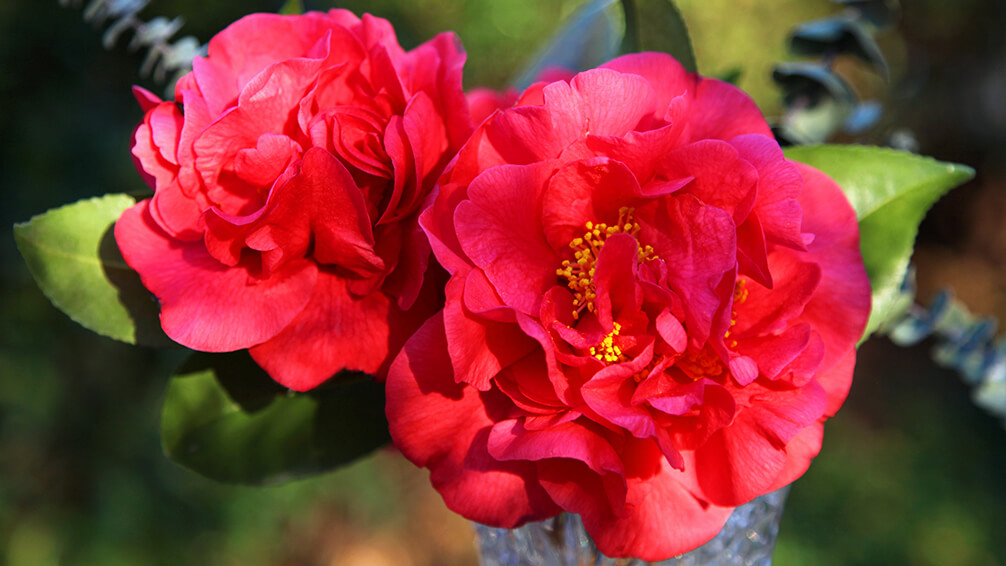
Australis
You’d swear, if a carnation and a bougainvillea had a baby, it’d look just like the Australis! The ruffly petals resemble a carnation, but there’s a distinctly tropical quality about its rich magenta color that feels reminiscent of the lush bougainvilleas you’d see on vacation in Mexico. Yellow stamens add little glints of gold peeking out from behind the petals. If you want a large landscape plant, this giant will grow up to 12 feet tall and 8 feet wide!
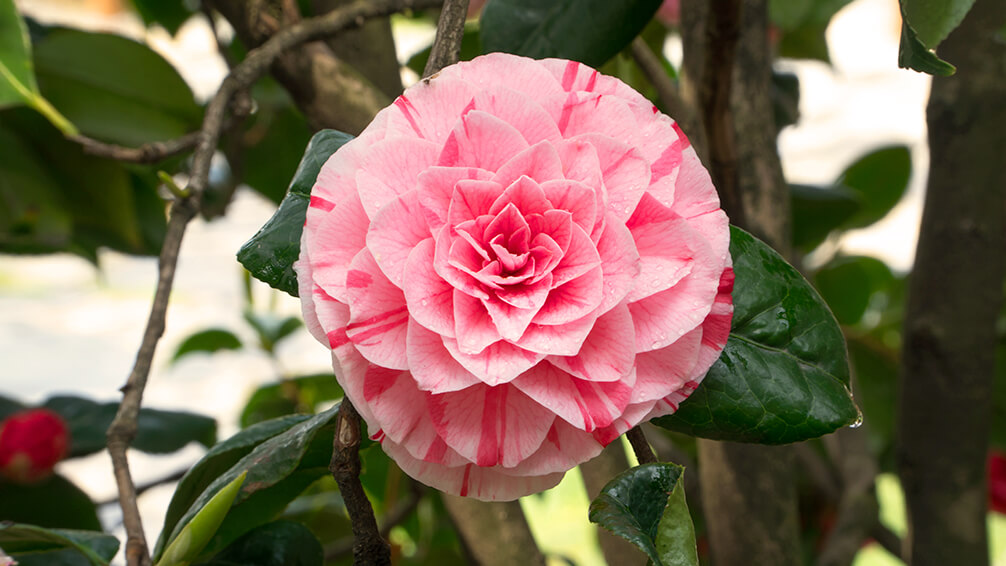
Bonomiana
For soft, subtle color that’s dreamy and sweet, you’ll love the Bonomiana. Each distinct little petal is a delectable shade of cotton candy pink, with edges that appear to be dipped in white chocolate. Try to plant it in a North or West-facing spot, as it’s a bit sensitive to bright morning light and prefers the shade.
Where is the Best Place to Plant a Camellia?
Sasanqua varieties tend to do best in full sun or part shade, while Japanese varieties typically thrive in partial to full shade and don’t do well in direct sun. Regardless of which kind you choose, you’ll want to keep the soil consistently moist but ensure it has good drainage.
Adding a layer of mulch will help to prevent that moisture from evaporating in the sun. We highly recommend doing a pH test of the soil before planting, and if necessary, adjusting the pH by adding lots of fresh compost and a sprinkle of coffee grounds, so it’s slightly on the acidic side.
What is the Best Time to Plant Camellias?
Typically, you can plant these shrubs in either early spring or late fall, but since we have such warm winters, you can get away with planting these guys in late winter. The milder temperatures ensure that the root systems won’t get shocked as you place them in the ground. Make sure you water them thoroughly right after planting! Watering shrubs generously for those first few months is essential for the roots to strengthen and spread out.
With the new year about to begin, what better way to kick off 2021 than with glossy greenery and romantic blossoms, to update your landscape with an ultra-luxe, lavish look. Pick some up at Plants for All Seasons—there are so many more exciting varieties to discover in-store!


Comment (1)
Frank houser is the most beautiful camellia
Comments are closed.